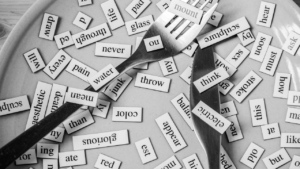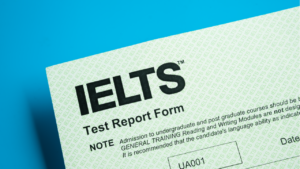The IELTS Reading test has three parts and a total of forty questions. The passages in the test are taken from everyday materials such as guidelines, brochures, newspapers, and company handbooks. The table given below provides a detailed description of the IELTS Reading Test.
IELTS Reading Test Overview
| Total Duration | 18 – 20 minutes |
| Number of questions | 13 |
| Types of questions | Sentence Completion, Table completion & Short Answer question |
| Band Score Range | 0-9 |
This test suits people starting a job or moving to a new country. It assesses how quickly you can read and understand practical information, follow written directions, and pay attention to details in everyday situations.
Try practising with the Flavour of Pleasure reading passage to enhance your reading, language, and vocabulary skills for the IELTS test. This blog provides the complete passage, various question types, and the Flavour of Pleasure reading answers.
Explore the blog for more IELTS reading question types, such as sentence completion, table completion, and short answer questions. This resource will aid you in developing your reading skills as a student.
Leap Advantage Virtual Spot Offer Event on May 10th 2024

Last call to secure your spot for Masters in STEM Program in the US for Fall ’24 exclusively for graduates and above.
Leap Advantage Virtual Spot Offer Event on May 10th 2024
Last call to secure your spot for Masters in STEM Program in the US for Fall ’24 exclusively for graduates and above.

About the Passage – the Flavour of Pleasure
Let’s explore the importance of the reading passage – the Flavour of Pleasure.
- This passage is part of the IELTS reading test, designed to evaluate how well you can focus, manage your time, read quickly, and understand what you read.
- It’s selected because it tests your abilities in handling information and applying your knowledge.
- Practising with this passage is beneficial because it makes you familiar with different question types and enhances your skill in choosing the correct answers.
If you’re looking for answers to the questions related to the Flavour of Pleasure, you can find them in this blog, along with explanations to check if your answers are correct.
This exercise is valuable as it helps you understand where you’re doing well and where you can improve. The answers with explanations provide a clear picture of your performance.
Reading Passage
Reading the paragraphs given below will help you figure out all the answers. You can also check your results by reading the explanations that follow.
The Flavour of Pleasure
Paragraph 1
In order to really appreciate a flavour, our mouth, tongue, and nose must all work together, regardless matter how much we chat about how much we love our favourite flavours. Most people pay scrutiny to the way food tastes, feels, and looks, but scientists term this “retronasal smell,” a little burst of the air we get as we’re chewing it.
Paragraph 2
Assuredly, taste buds are positioned in our mouths and tongues, where the five primary taste receptors can be found: sweet, salty, sour, bitter and savour, which is mostly specified as umami. However, we’ve noticed certain irregularities in our taste buds when it comes to food. For quick identification of toxins, which are frequently bitter or acidic in nature, they developed only a few basic tastes.
Paragraph 3
Everything about flavour’s depth, refinement, and gratification is dependent on the nose’s secondary sense of smell. When we inhale and exhale the aromas of our meal, a type of alchemy takes place. Unlike the hound’s skull, which developed expressly to detect exterior odours, human nostrils evolved to sense interior odours. Primates are experts at savouring the millions of flavour combinations that they can concoct for their tongues.
Paragraph 4
Recognising flavours lacking retronasal scent is difficult. Recently, headed by Yale University’s Gordon Shepherd, neuroscience has begun to shed light on the workings of the sense of smell, which has been the least known of the five. Shepherd coined the term ‘neurogastronomy’ to connect the discipline of food science, neurology, psychology, and anthropology with the savoury aspects of eating, one of the most cherished human experiences.
Paragraph 5
In many respects, he is realising that smelling is akin to recognising faces. Patterns of light and dark are detected by the visual system, and the brain builds a spatial map based on previous experiences. People and locations can be identified by analysing the patterns and drawing inferences based on their interrelationships. Patterns and ratios help us distinguish between new and old tastes in the same manner. The air molecules in our food are detected by specialised receptors at the back of the nose when we chew. The brain interprets odours as complicated spatial patterns based on data received from the receptors. It develops the concept of distinct flavours using these as well as information from the other senses.
Paragraph 6
This ability to enjoy certain fragrances turns out to be fundamental to the pleasure we derive from eating, similar to how our ability to distinguish persons is fundamental to the pleasures of social life. The process is so deeply ingrained in our brains that our sense of smell is essential to our overall enjoyment of life. Recent studies show that people who lose their social anxiety and their general sense of well-being take a nosedive.
Paragraph 7
Food scientists, psychologists, and cooks remarkably similar are interested in discovering the function of scent in flavour. Particularly, the relatively new field of molecular gastronomy focuses on knowing the mechanics of fragrance in order to alter flavour for optimal effect. In this field, chefs employ their knowledge of the chemical reactions that occur during cooking to create “extraordinary” culinary delights.
Paragraph 8
But while molecular gastronomy is mostly interested in the molecules of the food or “smell,” neurogastronomy is more interested in the molecules of the receptors and the brain’s spatial image of the smell. Shepherd calls the memories we remember when we smell them “odour objects,” and this has a direct link to how we feel. The brain makes pictures of smells it doesn’t know by comparing them to smells it does know. Back in the day, when visual clues were few and far between, we turned to our ability to smell to help us identify potential prey, much like most animals do today.
Paragraph 9
Thus, the flavour-recognition system of the brain is a very complicated perceptual process that engages all five senses in varied combinations. Visual and auditory clues, such as crunching, and tactile sensations, such as the texture and feel of food on our lips and in our mouths, all play a role. Inhalation activates the taste receptors, followed by the olfactory receptors. Imagining some of the diverse facial expressions evoked by various cuisines – many of which are hardwired into our brains from birth – is a simple way to convey the emotional engagement of humans. Consider the reaction to the acidity of the lemon and compare it to the face that welcomes the smooth marvel of chocolate.
Paragraph 10
The flavour-sensing system, every receptive to new combinations, helps us to keep our brains active and flexible. In addition to this, it can mould our aspirations and, eventually, our bodies. The potential for neuro-gastronomy to have a positive impact in the form of beneficial applications, such as the manipulation of flavour to control appetites, is on the horizon.
Crack IELTS Exam in first attempt

Attend Leap’s free masterclass to get tips, tricks and advance strategies to crack IELTS exam in first attempt
Crack IELTS Exam in first attempt
Attend Leap’s free masterclass to get tips, tricks and advance strategies to crack IELTS exam in first attempt

The Flavour of Pleasure Reading Questions & Answers
The questions are below, along with the Flavour of Pleasure IELTS reading answers.
Questions 1-5
Complete the sentences below.
Write NO MORE THAN TWO WORDS from the passage.
1. According to the scientists, the term ……………… characteristics the most critical factor is appreciating flavour.
2. ‘Savoury’ is a better-known word for …………….
3. The tongue was originally developed to recognise the unpleasant taste of ………………
4. Human nasal cavities recognise ……………. much better than external ones.
5. Gordon Shepherd uses the word ‘neuro-gastronomy’ to draw together a number of ……………. related to the enjoyment of eating.
Answers with explanation (1 – 5)
1. (retronasal) smell
Reference
Paragraph 1: Most people pay scrutiny to the way food tastes, feels, and looks, but scientists term this “retronasal smell,” a little burst of the air we get as we’re chewing it.
Explanation
The paragraph states that most people scrutinise how food tastes, feels, and looks. It also specifies that the scientists term this “retronasal smell,” a little burst of the air we get as we’re chewing it.
2. Umami
Reference
Paragraph 2: Assuredly, taste buds are positioned in our mouths and tongues, where the five primary taste receptors could be found: sweet, salty, sour, bitter and savour, which is mostly specified as umami.
Explanation
The paragraph mentions that taste buds are positioned in our mouths and tongues, where the five primary taste receptors can be found: sweet, salty, sour, bitter and savour, primarily specified as umami.
3. Toxins
Reference
Paragraph 2: For quick identification of toxins, which are frequently bitter or acidic in nature, they developed only a few basic tastes.
Explanation
The paragraph mentions that they developed only a few basic tastes to identify toxins quickly. It also specifies that the toxins are frequently bitter or acidic.
4. Internal scents/smells
Reference
Paragraph 3: When we inhale and exhale the aromas of our meal, a type of alchemy takes place. Unlike the hound’s skull, which developed expressly to detect exterior odours, human nostrils evolved to sense interior odours.
Explanation
The paragraph explains that alchemy occurs when we inhale and exhale the aromas of our meal. It further specifies that unlike the hound’s skull, which developed expressly to detect exterior odours, human nostrils evolved to sense interior odours.
5. Disciplines
Reference
Paragraph 4: Shepherd coined the term ‘neuro-gastronomy’ to connect the discipline of food science, neurology, psychology, and anthropology with the savoury aspects of eating, one of the most cherished human experiences.
Explanation
The paragraph mentions that the shepherd coined the term ‘neuro-gastronomy’ to connect the discipline of food science, neurology, psychology, and anthropology with the savoury aspects of eating, one of the most cherished human experiences.
Questions 6-9
Complete the table below.
Write NO MORE THAN TWO WORDS from the passage.
| Face recognition | Patterns of dark and light are used to put together a 6……….. | The brain identifies faces | Facial recognition is key to our enjoyment of 7…………… |
| Smell | Receptors recognise the 8………….. in food | The brain identifies certain 9……………. | Smell is the key to our enjoyment of food |
Answers with explanation (6 – 9)
6. Spatial map
Reference
Paragraph 5: Patterns of light and dark are detected by the visual system, and the brain builds a spatial map based on previous experiences.
Explanation
The paragraph mentions that the visual system detects the patterns of light and dark, and the brain builds a spatial map based on previous experiences.
7. Social life
Reference
Paragraph 6: This ability to enjoy certain fragrances turns out to be fundamental to the pleasure we derive from eating, similar to how our ability to distinguish persons is fundamental to the pleasures of social life.
Explanation
The paragraph mentions that the ability to enjoy certain fragrances is fundamental to the pleasure we derive from eating. It also specifies that it is similar to our ability to distinguish persons, which is essential to the joys of social life.
8. Air (molecules)
Reference
Paragraph 5: Patterns and ratios help us distinguish between new and old tastes in the same manner. The air molecules in our food are detected by specialised receptors at the back of the nose when we chew.
Explanation
The paragraph states that patterns and ratios help us distinguish between new and old tastes similarly. It also mentions that the air molecules in our food are detected by specialised receptors at the back of the nose when we chew.
9. Flavours
Reference
Paragraph 5: The brain interprets odours as complicated spatial patterns based on data received from the receptors. It develops the concept of distinct flavours using these as well as information from the other senses.
Explanation
The paragraph explains that the brain interprets odours as complicated spatial patterns based on data received from the receptors. It further specifies that the brain develops the concept of distinct flavours using these and information from the other senses.
Questions 10-13
Answer the questions below.
Choose NO MORE THAN ONE WORD from the text for each answer.
10. In what form does the brain store ‘odour objects’?
11. When seeing was difficult, what did we use our sense of smell to find?
12. Which food item illustrates how flavour and positive emotion are linked?
13. What could be controlled in the future through flavour manipulation?
Answers with explanation (10 – 13)
10. Memories
Reference
Paragraph 8: Shepherd calls the memories we remember when we smell them “odour objects,” and this has a direct link to how we feel. The brain makes pictures of smells it doesn’t know by comparing them to smells it does know.
Explanation
The paragraph explains that the shepherd calls the memories we remember when we smell them “odour objects,” which is directly linked to our feelings. It also specifies that the brain makes pictures of smells it doesn’t know by comparing them to smells it does know.
11. Prey
Reference
Paragraph 8: Back in the day, when visual clues were few and far between, we turned to our ability to smell to help us identify potential prey, much like most animals do today.
Explanation
The paragraph mentions that back in the day, when visual clues were few and far between, we turned to our ability to smell to help us identify potential prey, much like most animals do today.
12. Chocolate
Reference
Paragraph 9: Consider the reaction to the acidity of the lemon and compare it to the face that welcomes the smooth marvel of chocolate.
Explanation
The paragraph specifies that chocolate is a food linked to positivity or positive emotions. It also mentions that chocolate improves a person’s mood instantly.
13. Appetites
Reference
Paragraph 10: The potential for neuro-gastronomy to have a positive impact in the form of beneficial applications, such as the manipulation of flavour to control appetites, is on the horizon.
Explanation
The paragraph mentions the potential for neuro-gastronomy to impact beneficial applications positively. It further states that applications such as manipulating flavour to control appetites are on the horizon.
Expert Tips for the IELTS Reading Test
Below are some expert tips to help you improve your overall performance in the IELTS reading test.
1. Preview the Questions: Before reading the passage, quickly go through the questions. It helps you understand what information you need to find while reading.
2. Time Management: Keep an eye on the clock. Don’t spend too much time on one question. If you get stuck, move on to the next one and return later if you have time.
3. Skim the Passage: Start by skimming the passage to get a general idea of the topic. Look at headings, subheadings, and any bold or italicised text. It helps you understand the structure.
4. Highlight Keywords: When you find a question, underline or highlight keywords. Scan the passage for these keywords to locate the relevant information quickly.
5. Don’t Panic if You Don’t Know a Word: If you encounter a word you don’t know, don’t panic. Try understanding its meaning based on the surrounding words or rereading the sentence.
6. Focus on Paraphrasing: Questions may not use the exact words as the passage. Be ready for paraphrasing. If the question asks about “hobbies,” the passage may discuss “leisure activities.”
7. True, False, Not Given: Pay close attention to the differences between “True,” “False,” and “Not Given” answers. “Not Given” means the information is not in the passage.
8. Practice Skimming and Scanning: Practice skimming for the main idea and scanning for specific details. Skimming helps you understand the meaning while scanning lets you find details.
9. Check Your Spelling: Make sure your answers are spelled correctly. Spelling mistakes can cost you points. If you’re unsure of a word’s spelling, use simpler synonyms.
10. Review Your Answers: If time allows, go back and review your answers. Check if you’ve filled in all the blanks, and make sure your responses make sense in the passage’s context.
Conclusion
The IELTS Reading test requires a good understanding of various text types and the ability to find information quickly. Practising regularly, improving vocabulary, and developing efficient reading strategies are essential.
Remember to carefully read the instructions and manage your time wisely during the test. Additionally, don’t be afraid to guess answers if you’re unsure, as you won’t lose marks for wrong answers.
Counselling advice for IELTS Reading success includes setting a study schedule, focusing on weak areas, and practising with various texts. Use resources like sample tests and study guides to familiarise yourself with the test format.
Work on enhancing your skimming and scanning skills to identify critical information swiftly. Remember, practice and preparation are vital to boosting your confidence and achieving a successful outcome in the IELTS Reading test.
If you want to learn more about the IELTS Reading Test, contact Leap Scholar Counsellors now.
Good luck!
Frequently Asked Questions
-
Q. What is the importance of the IELTS Reading Test?
Ans. The IELTS Reading test is one of the critical components of the IELTS Exam. It evaluates how well you can understand written texts, including the main ideas and the facts that back them up. It assesses how well you know what you’re reading and how well you can find helpful information in different types of text, like emails, stories, and ads.
-
Q. How many parts are there in the IELTS Reading test?
Ans. The IELTS Reading test has three parts, each with a different piece of writing. These words get more complex as you read them from sections one to three. Scan the questions to get an idea of what to expect. With this, you can read faster and better. It will help you improve your overall band performance.
-
Q. How many parts are there in the IELTS Reading test?
Ans. The IELTS Reading test has three parts, each with a different piece of writing. These words get more complex as you read them from sections one to three. Scan the questions to get an idea of what to expect. With this, you can read faster and better. It will help you improve your overall band performance.
-
Q. Are there different kinds of questions on the IELTS Reading test?
Ans. The IELTS Reading test has different questions, like sentence completion, table completion, and more. Before the test, you need to know how to answer each question because they all need different methods. Read quickly to get the main idea. Don’t worry about small things right now.
-
Q. How long does it take to finish the IELTS Reading test?
Ans. The IELTS Reading test takes an hour to complete. It takes about 20 minutes to finish each part with 13 to 15 questions. You should pay close attention to the headings and subheadings in the passage. They can give you tips to help you determine the material and structure.
-
Q. Can I write right on the paper during the IELTS Reading test?
Ans. That’s fine; you can write right on the test questions. You can write things down, highlight them, or circle them to help you answer the questions correctly. Read the sentence to figure out what the word means if you don’t understand it. It is given to help you understand the main point.
-
Q. Do you get in trouble if you give wrong answers on the IELTS Reading test?
Ans. No, giving wrong answers on the IELTS Reading test won’t get you in trouble. It’s better to guess an answer than to leave it blank because you might get it right. You’ll get extra points if you get it right. To do well, pay attention to one question at a time. Get away from the situation for now and come back later.
-
Q. Can I use a pencil instead of a pen on the IELTS Reading test?
Ans. A pencil or a pen can be used for the IELTS Reading test. If you need to make changes, using a pencil for tasks like filling in blanks or matching facts is best. They are also written in words different from the text. Look for lines or words that have been changed but still mean the same thing.
-
Q. When you take the IELTS Reading test, do all the readings relate to college?
Ans. No, the IELTS Reading test isn’t just a test of general information. You are also asked to read science texts, magazine or book excerpts, and news stories to interest the public. You need to read and write about many things to get good grades. You can get better at practising these skills and go faster.
-
Q. Can I review the texts again during the IELTS Reading test?
Ans. As you answer the questions on the IELTS Reading test, you can look back at what you read. To quickly find the answers you need for each question, you will be given the questions and their solutions. Cross out the answers you know are wrong if you’re unsure about them. You’re more likely to choose the right one.
-
Q. Do I need to read the whole thing for the IELTS Reading test?
Ans. If you are in a hurry, reading the whole chapter might take time. An excellent way to speed through the passage and get the knowledge you need to answer the questions is to focus on what you need to know and skim it. Read it, but don’t miss the details. You should pay more attention to some questions to get the correct answer.
-
Q. Can I take notes while I read for the IELTS Reading test?
Ans. On the IELTS Reading test, you can make notes as you read the part. You can use these notes to help you remember important facts, the main points of an argument, or anything else that will help you give a great answer. Also, pay attention to how many words you can use in your comments. If the question asks for it, write one word.
-
Q. Can I use my own words when I answer questions on the IELTS Reading test?
Ans. On the IELTS Reading test, you can use your own words to answer questions. But it is vital that your answer exactly fits what is in the text. Making changes to and outlining the piece can show that you understand it. You’ll get better at the test style the more you do it. Get used to different types of questions by taking practice tests.







